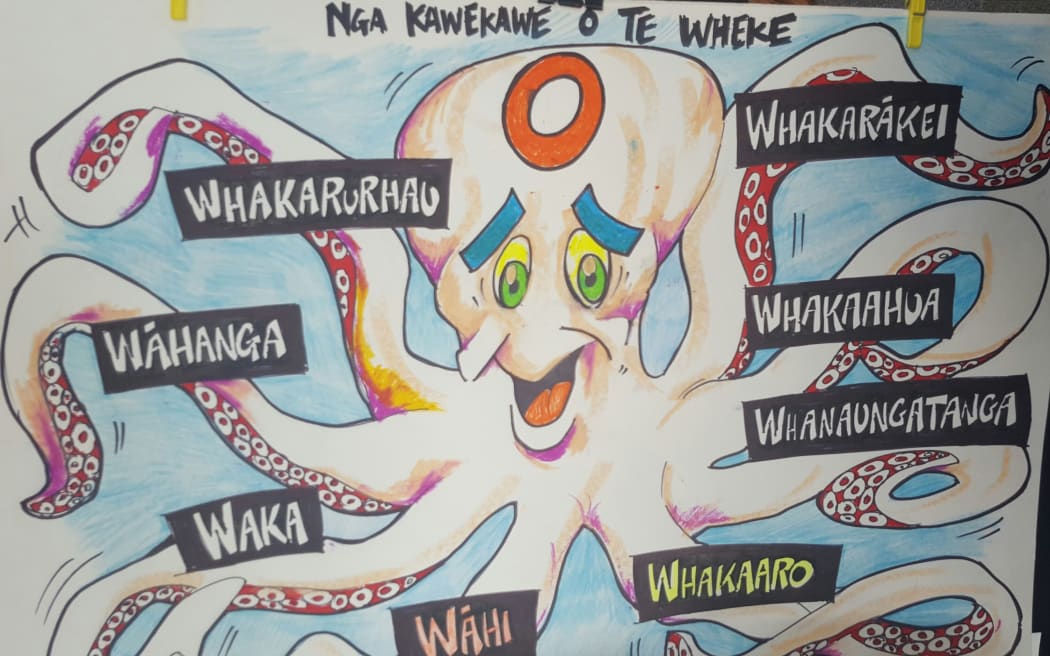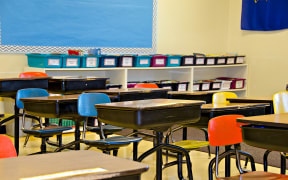Children in low-income neighbourhoods are an average of two years ahead of those in affluent areas in a test of te reo Māori, the latest National Monitoring Study of Student Achievement has found.

A Māori language teaching resource. Photo: RNZ / Mihingarangi Forbes
The study assessed children in Years 4 and 8 in the curriculum area of "learning languages" in 2016.
It found students at low and mid-decile schools had higher average scores in a test of te reo than children in high-decile schools.
The difference at Year 4 was equivalent to nearly a year's advancement in the language, but at Year 8 the gap between low and high-decile students widened to the equivalent of two years.
Māori children had the highest average scores in the test and at Year 8 their average was ahead of New Zealand European children by the equivalent of nearly four years of learning. Pasifika children had the next highest scores.
The report said speaking Māori at home, often or always, boosted children's average scores by the equivalent of more than three years' of learning by the time they reached Year 8.
"Around half of all students at each year level reported they never spoke te reo Māori at home. This compared with 26 percent of Māori students at Year 4, and 15 percent of Māori students at Year 8 who said that they never spoke te reo Māori at home."
Vice president Myles Ferris of Te Akatea, the association of Māori school principals, told Morning Report the reason for the difference was relatively simple to understand.
"Predominantly the demographics are that Māori tend to be in lower-decile areas so there is a higher demand for te reo Māori in those schools," he said.
He said he also thought learning of the reo was improving.
"There has been a strong push over the last few years to improve te reo Māori in our schools but I think the other aspect of it is that we're actually starting to value it more.
"That needs to increase if we're going to create a level of success for our students in school. Our kids are great at learning languages, many of them speak two languages and they love learning te reo.
"I just think that as we continue to improve and continue to push forward with our reo Māori programmes we are going to see a much better and a greater increase in those levels.
"I think the report showed that there was quite a few students who were interested in learning te reo Māori and actually wanted it."
He said getting teachers with the skills to teach it was a huge problem, however.
"It took us two terms basically for us to find a te reo Māori teacher for our rumaki Māori programme in school and I know a lot of other schools are really struggling.
He said there was a huge demand for reo Māori teachers, and it was also about increasing the capacity for all teachers to speak and teach te reo Māori.
"There are more Māori students in the English medium than in the Māori medium and we need to be able to provide te reo Māori programmes for all our Māori students and in fact all out students in Aotearoa.
The test found that in Year 4, most students knew some Māori words and could respond to greetings. By Year 8, many knew more words including words associated with powhiri, understand several classroom commands, and could write numbers in Māori.
Students with the highest level of proficiency could respond simply in Māori to questions posed in te reo, knew the Māori words for most colours and could identify Māori words for a range of body parts.
At Year 8, 53 percent of Māori students and 16 percent of non-Māori students said learning te reo was "very important".
The study found most students sang waiata and heard their teachers give instructions in Māori, and most learned new words and phrases in Māori or learned about Māori culture.
Most students agreed that they enjoyed learning Māori and wanted to continue learning it, though most also said they would rather learn a different language.



